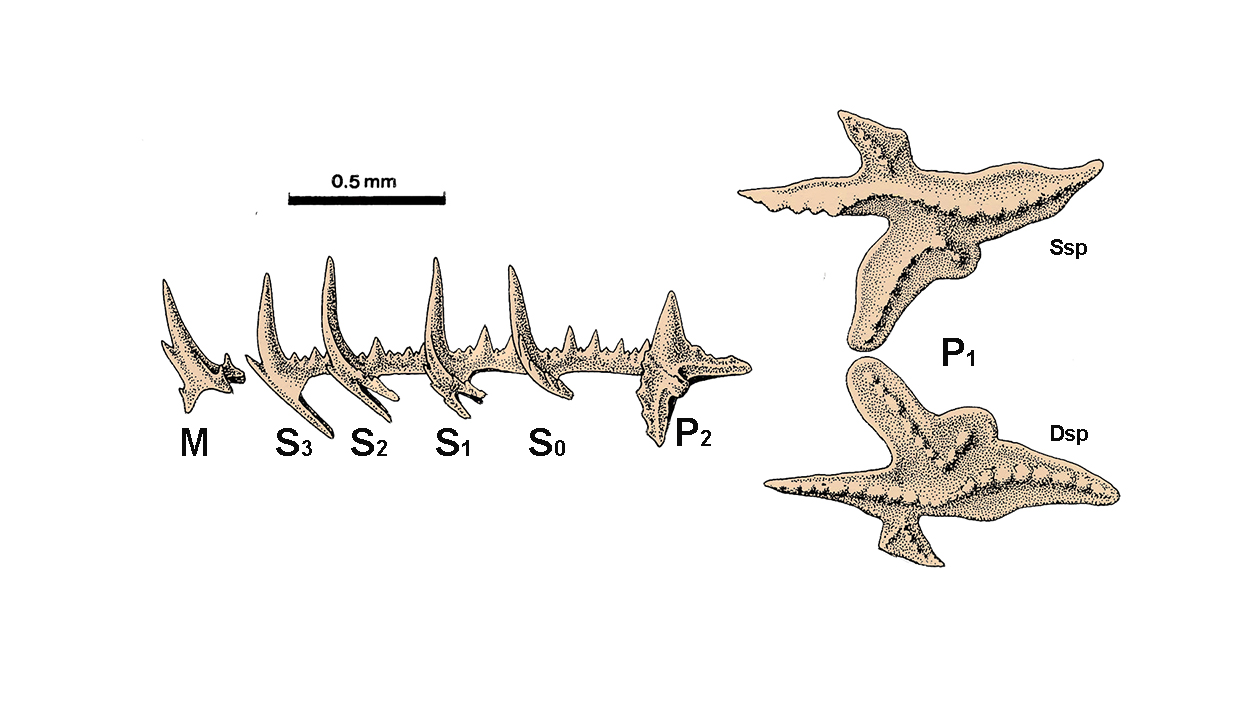Amorphognathus ordovicicus Branson & Mehl, 1933
Sugerowana cytacja: Moczyński 2018. Amorphognathus ordovicicus Branson & Mehl 1933. Ikonoteka (http://ikonoteka.paleo.pan.pl/xwiki/bin/view/Species/Amorphognathus+ordovicicus)
Diagnoza The ne elements with a long cusp dominating over the denticles, which occur in very low numbers, usually a single one on each process. Porównanie Only platform and hi elements were described by BRANSON and MEHL (1933) from the type locality. The identification of the species is based on the assumed conspecificity with populations studied by BERGSTROM( 1971) and ORCHARD (1980) . Some of the sp elements from the upperm ost part (Zalesie Formation) of the Mójcza section have an unbranched anterior process Autekologia Występowanie geograficzne Zasięg czasowy Populations from the marly limestones of the Zalesie Formation in Mójcza are Materiały muzealne Literatura Bergström, S.M. & Leslie S.A. 2010. The Ordovician zone index conodont Amorphognathus ordovicicus Branson & Mehl, 1933 from its type locality and the evolution of the genus Amorphognathus Branson & Mehl, 1933. Journal of Micropalaeontology 29, 73−80. Dzik, J. 1994a Conodonts of the Mójcza Limestone. In: J. Dzik, E. Olempska, & A. Pisera. Ordovician carbonate platform of the Holy Cross Mountains. Palaeontologia Polonica 53, 43-128. |
|


